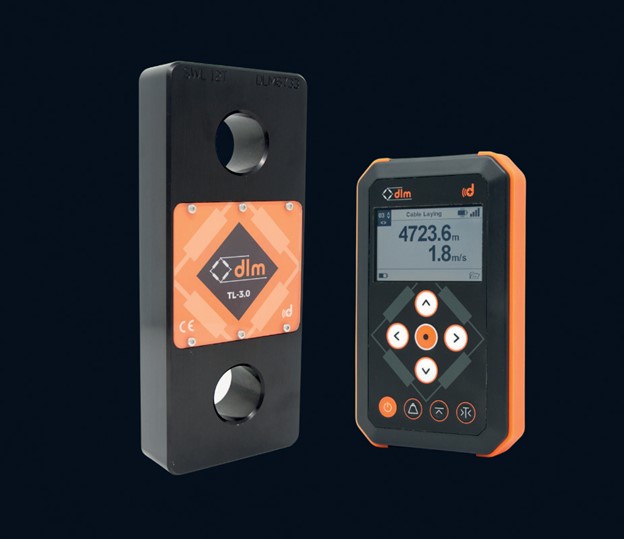Load cells: A critical safety device
22 March 2024Load cells are a critical safety device and necessary in any situation where the weight of an item being lifted is not known, or there is a risk of overloads, writes Martin Halford, managing director at the UK’s Dynamic Load Monitoring, which has a partnership with Chant Engineering Co., of New Britain, Pennsylvania.
A load cell is a transducer that is used to measure a force, typically a compressive, tensile or shear force. Most load cells work by using foil strain gauges bonded to a metal structure, designed to perform accurately and safely withstand the load applied to it. The strain gauges measure strain in the load cell material under load and translate that strain to a millivolt (mV) output, which is then typically fed into a display and scaled to a load range – say, pounds or tonnes.
Like any sector, the load cell industry has evolved rapidly in recent years, most appreciably in terms of technology. digital handheld displays have been used to read the load for a long time, but electronics built into the load cells can now also transmit the load signal wirelessly to a display or direct to a smartphone or PC using a dongle or Bluetooth. Data-logging software can even be used to log the load data on a PC against time and be analysed and processed at a later date.
There are many different types of force measuring product, but our TL-3.0 telemetry tensile link load cells or our TS-3.0 telemetry shackle load cells are probably the most popular in lifting and rigging – and I would imagine other manufacturers would say similarly of their tensile links or load shackles. These products alone cover a myriad of applications in cranes, wider construction, and even line tension measuring on winches; in other words, they are very diverse.
You might find these load cells in permanent use or employed as a single-use tool in a weighing or testing project. Our tensile links and shackle load cells are typically utilised as measurement devices to weigh or test something, whereas our custom load pins tend to be employed more in permanent applications and form part of clients’ equipment, installed on a crane, for example.
Compressive load cells, meanwhile, are becoming more common in the US, particularly in the heavy-lift sector, for monitoring loads on bridges and other large structures. Our compressive load cells have been used to weigh huge power generators, large offshore structures in the oil and gas industry, and during construction of super yachts and ships. Cranes and hoists are ubiquitous in all such industries.
Compressive load cells are used to measure centre of gravity, which remains one of the more misunderstood applications we encounter, even if Chant Engineering is reporting back on a greater volume of requests for such work. Today, these tasks can be calculated in two-dimensional plane using load cells and distance measurements, even if knowing the true centre of gravity of a threedimensional structure is a bit more challenging.
The range and robustness of the signal in harsh environments is becoming very important, especially as users are essentially transmitting safety information to the operator, who may need to act on the information they see.
Having a long range is important as it allows them to stay at a safe distance from the structure they are weighing, along with a transmission that is not affected by high power radio or Wi- Fi. Accompanying software is also becoming important, especially in terms of data-logging, as it allows the customer to have a traceable record of the loads seen against time, thus, providing added confidence.
In conclusion, load cells and lifting go hand in hand. They are a critical safety device, and in any situation where the load is not known or there is a risk of overloads, the user should be looking to minimise risk and protect both the operators and asset from harm.
Calibration counts
You can’t talk about force measurement, in lifting or any other industry, without referencing calibration, which is the correlation of the readings of an instrument to check accuracy. Dealers and end users alike should note that a certificate of calibration is valid for one year; we contact customers when their products are due for recalibration, but it is worth everyone in a supply chain keeping on top of this.
Load cells are calibrated upon their manufacture. Typically, the process is to take a test machine (in-house) or tensile link (on site) as the reference load cell, which provides a known reading; when the tensile link or machine shows 10t, for example, the other product is referenced to it.
Recalibration is especially important because there are many ways to damage a load cell without generating a hazardous incident. It is just as much about asset integrity as safety; the only way to do this is to accurately know the load being applied.
While important, the process is simple:
- Visually and functionally inspect the equipment;
- Apply load to the device, with a known reference;
- Record the load readings from the device before any adjustment is made;
- Adjust the load output to bring the output within the specified limits (the limit varies depending on the product/application);
- Produce a calibration certificate to evidence accuracy.
Remember, calibration is the correlation of the readings of an instrument to check accuracy. And accuracy equals safety.
Towards technology
In some respects, the lifting and rigging industry gave load cells their first foothold in the US market. Many equipment distributors and dealers that serve regions of the Americas have had a presence in this sector for generations; the principles of lifting haven’t changed, but it is an industry that has pivoted in recent years towards technology, automation and the Internet of Things (IoT). Load cells have been more readily sourced as a result, where perhaps they weren’t previously when orders were largely limited to custom products for the offshore industry rather than for lifting and rigging applications.
One natural driver of load monitoring technology around lifting and rigging equipment is renewable energy; the east coast of the US is a hotbed of offshore wind activity. Load cells are utilised in the manufacture, transportation, erection, use, maintenance and decommission of wind turbines; that’s without all the supplementary work with cables etc. that fall outside of the crane and hoist industry.
We have a long-running partnership with Chant Engineering. Notably of British heritage, like us, Chant is a diversified engineering company that designs, manufactures, services, and calibrates testing machines, systems, and related accessories for industrial and military customers. It has stocked and distributed our standard tensile load links (SL-3.0) up to 50-ton capacity and handheld displays (TW-3.0-S) to the US since 2015, and further penetrates the market via a sub-distribution network. Today, up to 70% of our sales attributable to lifting and rigging come from the US.

